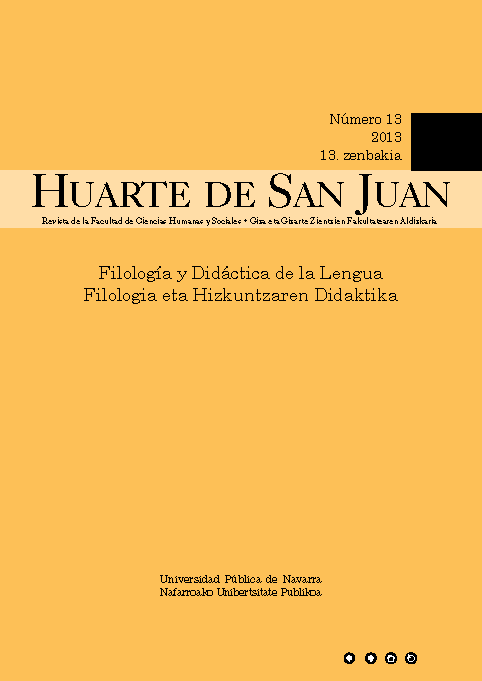Different Drifters: Disability and Illness in Contemporary U.S. Road Films
Keywords:
Road movies, different bodies, representation of illness, visibility, generic revitalizationAbstract
The main aim of this article is to trace historically the representation of illness in the US American road movie exploring how the presence of different, diseased bodies may shatter generic expectations and subsequently result in the genre’s revitalization. After exploring the factors accounting for the increasing representation of sick people in the contemporary road movie, a sample of representative road films (The Straight Story, Around the Bend, The Living End, Boys on the Side, My Own Private Idaho, Homer & Eddie and Rain Man) is analysed to understand the contribution of ill drifters during the 1990-2010 period. This contribution mainly focuses upon the increasing, though not always positive, visibility of this underrepresented minority in this genre and evidences how illness and impairment may throw social outcasts on a drifting journey. Since the 1990s the road genre is fighting against the discrimination of contemporary US society against ill people on the big screen. In doing so, it offers a potentially wider and more positive viewer identification and a more democratic social representation and, at the same time, shows a significant revitalization as a genre.
Downloads
References
Atkinson, Michael (1994): «Crossing the Frontiers», Sight & Sound, 4.1, pp. 14-18.
Featherstone, Mike and Hepworth, Mike (1993): «Images of Ageing», in Ageing in Society: An Introduction to Social Gerontology, edts. John Bond, Peter Coleman and Sheila Peace, Sage Publications Limited, London-California-New Delhi, pp. 304-332.
Hark, Ina Rae (1997): «Fear of Flying. Yuppie Critique and the Buddy Road Movie in the 1980s.» in The Road Movie Book, edts. Steven Cohan and Ina Rae Hark, Routledge, London & New York, pp. 204-29.
Hart, Kylo-Patrick R. (2000): The AIDS Movie: Representing a Pandemic in Film and Television, The Haworth Press, New York.
Holmlund, Christine (1994): «Crusin’ for a Bruisin’: Hollywood’s Deadly (Lesbian) Dolls», Cinema Journal, 34.1, pp. 31-50.
Kreider Tim and Content, Rob (2000): «The Straight Story», Film Quarterly 54.1, pp. 26-33.
Laderman, David (2002): Driving Visions: Exploring the Road Movie, University of Texas Press, Austin.
Lang, Robert (1997): «My Own Private Idaho and the New Queer Road Movies», edts. Steven Cohan and Ina Rae Hark, Routledge, London & New York, pp. 330-348.
Longmore, Paul K. (2003): Why I Burned my Book and Other Essays on Disability, Temple University Press, Philadelphia.
Loud, Lance (1991): «Shakespeare in Black Leather», American Film, sept/oct., pp. 32-37.
Mills, Katie (1997): «Revitalizing the Road Genre: The Living End as an AIDS Road Film», edts. Steven Cohan and Ina Rae Hark, Routledge, London & New York, pp. 307-329.
Norden, Martin F. (1994): The Cinema of Isolation: A History of Physical Disability in the Movies, Rutgers University Press, New Brunswick, New Jersey.
Steinbeck, John (1997): Travels with Charley: In Search of America, Penguin Books, New York.
Taubin, Amy (2001): «Objects of Desire: Gus Van Sant’s My Own Private Idaho», in American Independent Cinema: A Sight and Sound Reader, edt. Jim Hillier, British Film Institute, London, pp. 79-86.
Willis, Sharon (1997): «Race on the Road. Crossover Dreams», edts. Steven Cohan and Ina Rae Hark, Routledge, London & New York, pp. 287-306.
Downloads
Published
How to Cite
Issue
Section
License
All articles are published under a Creative Commons (BY-NC-ND 4.0) license. Each article will be assigned a DOI.
Authors retain copyright of their work and grant the journal the right to the first publication. Authors can sign additional agreements to non-exclusive distribution of the published version of the article (for example, in an institutional repository) as long as appropriate attribution to the original publication is provided. Articles can be uploaded to institutional repositories immediately after publication.
Electronic distribution of the articles (for example, academic social networks or personal webpages) is allowed and encouraged.
The journal reserves the right to publicise the work in social networks and other electronic means.







